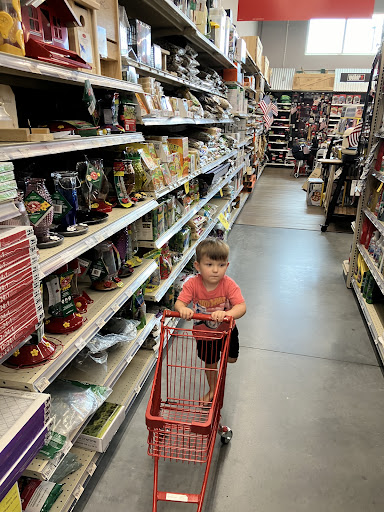The Most Common Lawn Care Frustration: Why Your Lawn Mower Won’t Start
When your lawn mower won’t start, it’s a frustrating but common problem. Instead of an engine’s roar, you get silence or sputtering. But don’t worry—most starting issues are simple fixes you can do yourself.
Quick Answer: Most lawn mower starting problems fall into these categories:
- Fuel Issues – Old gas, empty tank, or clogged fuel system (60% of cases)
- Spark Problems – Dirty or faulty spark plug
- Air Blockage – Clogged air filter or obstructed deck
- Oil Level – Too low or contaminated oil
- Safety Features – Engaged brake or safety switches
Your lawn mower needs three things to run: fuel, spark, and air. If one is missing, your mower won’t start. Think of it as a three-legged stool—remove any leg, and it falls over.
The helpful team at Lowcountry Ace has helped countless Charleston-area homeowners diagnose these issues. With the right approach, you can get your mower running reliably and keep your lawn looking its best.
Safety First & Quick Initial Checks
Before troubleshooting why your lawn mower won’t start, prioritize safety. These machines have sharp blades and flammable fuel.
The Golden Rule: Always disconnect the spark plug wire first. This prevents the engine from accidentally starting while you work. Pull the wire off the plug and tuck it away. When tipping the mower, always keep the air filter and carburetor facing up to prevent fuel and oil leaks.
Now, let’s run through some quick checks that solve a surprising number of starting issues.
-
Check the Starter Rope and Safety Bar: If the rope is hard to pull, ensure the safety bar (bail lever) is held firmly against the handle. This is a required safety feature. If the rope is still stuck, the blade might be jammed with grass. After disconnecting the spark plug, tip the mower and clear any debris from the deck.
-
Check the Fuel and Oil: It sounds obvious, but is there fresh gas in the tank? An empty tank is a common culprit. Also, check the oil level. Many modern mowers have a low-oil sensor that prevents the engine from starting to avoid damage. Pull the dipstick, wipe it, reinsert it fully, and check that the level is between the “add” and “full” marks.
If you need to top off, you can find quality lawn mower oil at any Lowcountry Ace. These simple checks solve about half of all lawn mower won’t start problems. If you’re still stuck, it’s time for more detailed diagnostics.
Why Your Lawn Mower Won’t Start: A Step-by-Step Diagnostic Guide
You’ve checked the basics, but your lawn mower won’t start. Let’s walk through the three essential systems: fuel, spark, and air. A problem in one of these is almost always the cause.
First, listen to what the mower is doing:
- Engine turns over but won’t start: The starter rope pulls and the engine cranks, but it never fires up. This usually points to a fuel or spark issue.
- Engine won’t turn over at all: The starter cord is stuck or extremely hard to pull. This suggests a mechanical obstruction or a safety interlock problem.
Let’s explore the most common culprits, starting with the fuel system, which accounts for the majority of starting problems.
Fuel System: The #1 Reason a Lawn Mower Won’t Start
Fuel problems are the leading cause of a non-starting mower. Here’s what to check:
-
Stale Fuel: Gasoline can go bad in as little as 30 days, especially ethanol-blended fuel common in our humid Charleston climate. Old fuel leaves gummy deposits that clog the carburetor’s tiny passages. If your mower has been sitting for over a month, this is a likely suspect. Solution: Drain the old fuel completely using a siphon pump and replace it with fresh gasoline. To prevent this, always add a fuel stabilizer to fresh gas, which we stock at Lowcountry Ace.
-
Flooded Engine: If you smell strong gasoline fumes after several starting attempts, the engine is likely flooded. Solution: Wait 15 minutes for the excess fuel to evaporate. Then, try starting again without using the primer or choke.
-
Clogged Fuel Filter or Lines: A dirty filter can starve the engine of fuel. If the small inline filter between the tank and carburetor looks dirty, replace it. They are inexpensive and easy to find.
-
Carburetor Issues: This is the heart of the fuel system. Sometimes, a gentle tap on the side of the carburetor bowl with a screwdriver handle can free up a stuck internal part. If that doesn’t work, the carburetor may need a thorough cleaning, which involves removing and disassembling it.
- Clogged Fuel Cap Vent: A tiny hole in the fuel cap allows air in as fuel is used. If it’s clogged, a vacuum forms and stops fuel flow. Solution: Try loosening the cap slightly. If the mower starts, clean the vent hole.
Ignition System: What to Do When Your Lawn Mower Won’t Start and Has No Spark
If the fuel system is fine, the next step is to check for spark.
-
Faulty Spark Plug: The spark plug is a common failure point. Remove it with a spark plug wrench. If the tip is black, sooty, or wet, it’s fouled. While you can clean it with a wire brush, spark plugs are inexpensive, and we recommend replacing it annually for reliability. You can find the right one for your model at Lowcountry Ace.
-
Checking for Spark: To test, reconnect the wire to the removed plug. Using insulated pliers, hold the plug’s threaded base against a bare metal part of the engine. Have someone pull the starter cord. You should see a strong, blue spark. No spark or a weak yellow one indicates a deeper ignition problem, possibly with the ignition coil, which may require professional service.
Checking for Airflow Problems
An engine needs to breathe. A lack of air can prevent it from starting.
-
Dirty Air Filter: This is the engine’s first line of defense against dirt. A clogged filter chokes the engine. Remove the filter cover and inspect it. Paper filters should be replaced when dirty. Foam filters can be washed in soapy water, dried, and lightly oiled. We recommend checking the filter every 25 hours of use.
-
Clogged Mower Deck: A deck packed with wet grass can prevent the blade from spinning, which in turn stops the engine from turning over. After disconnecting the spark plug, clear all debris from under the deck. This is also a good time to check if your blades are dull. We offer professional lawn mower blade sharpening to keep your mower cutting efficiently.
Advanced Mechanical Problems & When to Call a Pro
If you’ve checked the fuel, spark, and air systems and your lawn mower won’t start, you might be facing a more serious mechanical issue. Here are a few common advanced problems and when it’s wise to seek professional help.
-
Sheared Flywheel Key: If your mower stopped abruptly after hitting a rock or root and now won’t start, you may have sheared the flywheel key. This small metal part is designed to break to protect the engine’s crankshaft from damage. Replacing it requires special tools like a flywheel puller, so this is often a job for a repair shop.
-
Low Engine Compression: If the starter cord pulls with almost no resistance, your engine may have lost compression. This can be caused by worn piston rings or damaged valves, preventing the engine from creating the force needed for combustion. Diagnosing and fixing this requires specialized tools and expertise.
-
Grinding Noises: Grinding or other harsh mechanical sounds when you try to start the mower are a red flag. This could indicate a lack of lubrication, a problem with the starter motor on electric-start models, or serious internal engine damage. Stop trying to start it and consult a professional to avoid further damage.
-
Excessive Smoke: Your mower’s exhaust can offer clues:
- White Smoke: Often means water has entered the fuel or oil system.
- Blue Smoke: Indicates the engine is burning oil, likely due to overfilling or internal wear.
- Black Smoke: Usually means the engine is getting too much fuel and not enough air (check your air filter and carburetor).
Persistent white or blue smoke warrants a professional diagnosis.
Knowing When to Call for Backup
There’s no shame in calling for professional help. It’s time to consult an expert when:
- You’ve tried all the basic troubleshooting steps without success.
- You suspect an internal engine issue like low compression or a sheared flywheel key.
- You’re uncomfortable performing a specific repair.
Most lawn mower repairs cost under $250, making it a sensible option for a quality machine. However, if repair costs approach the price of a new mower, it might be time to consider a replacement. The team at Lowcountry Ace can help you find a new Ace Hardware lawn mower that fits your needs and budget.
How Regular Maintenance Prevents Starting Problems
Most lawn mower won’t start issues are preventable. A few minutes of regular maintenance can save you hours of frustration and the cost of a repair shop visit. Think of it as an investment in a reliable start every time.
End-of-Season Storage: Your Key to Spring Success
How you store your mower for the winter directly impacts how it starts in the spring.
- Manage the Fuel: Either run the engine until it’s completely out of gas or fill the tank and add a quality fuel stabilizer. Run the engine for a few minutes to circulate the treated fuel through the carburetor.
- Change the Oil: End-of-season is the best time for an oil change. This removes contaminants and ensures the engine is protected during storage.
- Clean It Thoroughly: Scrape grass and debris from the underside of the deck to prevent rust and corrosion. Storing your equipment properly is a key part of good how to store garden tools practices.
Simple Seasonal Maintenance Checklist
- Before Each Season (Spring): Replace the spark plug and paper air filter. Change the oil if you didn’t do it in the fall. Check that your blade is sharp and balanced.
- During Mowing Season: Use fresh fuel (less than 30 days old) or fuel treated with a stabilizer. Regularly clean the mower deck and check the oil level every few mows.
- Blade Care: A dull blade makes the engine work harder and tears grass instead of cutting it cleanly. We offer professional lawn mower blade sharpening services to maintain peak performance.
A well-maintained mower starts reliably and lasts longer. This simple routine is the best way to avoid a lawn mower won’t start headache on a beautiful Saturday morning.
Frequently Asked Questions about Lawn Mower Starting Issues
At Lowcountry Ace, we hear these questions all the time. If your lawn mower won’t start, your problem is likely on this list.
Why does my lawn mower only run for a few seconds and then die?
This classic symptom means the engine is being starved of fuel. It gets just enough to start, then quits. The three most common culprits are:
- Clogged Fuel Cap Vent: A blocked vent creates a vacuum in the tank, stopping fuel flow. Try loosening the cap; if it runs, you’ve found the issue. Clean the vent.
- Dirty Fuel Filter: It may be letting just a trickle of fuel through. Replace it if it looks dirty.
- Clogged Carburetor: Gummy deposits from old fuel are likely blocking the main jet. The carburetor needs cleaning.
My mower’s pull cord is stuck. What should I do?
A stuck cord usually isn’t a catastrophic failure. Before you panic, check these things:
- Engaged Flywheel Brake: Make sure you are holding the safety bail lever firmly against the handle. This brake must be disengaged for the engine to turn.
- Obstructed Blade: Grass or a stick jammed against the blade will lock the engine. Disconnect the spark plug wire first, then tip the mower and clear any debris.
- Hydro-locked Engine: Too much oil or gas can fill the cylinder, preventing the piston from moving. Remove the spark plug and gently pull the cord to clear the fluid.
- Broken Recoil Starter: If none of the above work, the spring mechanism in the starter assembly may be broken and require repair.
Is it bad to use gasoline with ethanol in my lawn mower?
Yes, ethanol-blended gasoline can be problematic for small engines. Ethanol is hygroscopic, meaning it absorbs moisture from the air, which leads to corrosion and rust inside your fuel system. Over time, this water can separate from the gas (phase separation) and cause the engine to stall or not start.
Ethanol also contributes to the rapid breakdown of fuel, creating varnish and gummy deposits that clog carburetors.
Your best options are:
- Use Ethanol-Free Fuel: This is the ideal choice for all small engines. Many gas stations offer it, and we carry pre-mixed, stabilized ethanol-free fuel at Lowcountry Ace.
- Use a Fuel Stabilizer: If you use regular pump gas, always add a fuel stabilizer. This will neutralize the harmful effects of ethanol and keep your fuel fresh for much longer, preventing most lawn mower won’t start problems related to fuel.
Get Your Mower Running and Your Lawn Looking Great
There’s great satisfaction in fixing a stubborn mower. When your lawn mower won’t start, it can feel daunting, but most issues trace back to three simple needs: fuel, spark, and air. By systematically checking each one, you can solve most problems yourself.
Remember the key takeaways:
- Safety First: Always disconnect the spark plug before working on your mower.
- Fresh Fuel is Crucial: Stale gas is the #1 enemy of small engines. Use fuel stabilizer or ethanol-free fuel.
- Maintenance Prevents Problems: A simple routine of changing oil, cleaning filters, and sharpening blades is your best defense against starting issues.
- Check the Obvious: Don’t forget to check the fuel level, oil level, and safety bar before diving into complex repairs.
Knowing your limits is also important. For complex issues like low compression or internal damage, professional help is a wise investment. The helpful team at Lowcountry Ace is here to support our Charleston community, whether you need parts, tools, or just some friendly advice.
Your lawn is waiting. With this knowledge, you’re ready to keep your mower running reliably all season. For all your lawn and garden needs, visit us or learn more about our services and locations. We’re here to help you get the job done right.
Lowcountry Ace Hardware: Your one-stop shop for home improvement. We offer quality products from trusted brands and expert advice from our experienced staff. Located on James Island, visit us for tools, hardware, fishing gear, power tools, building materials, grills & smokers, electrical and plumbing supplies, and more.
















